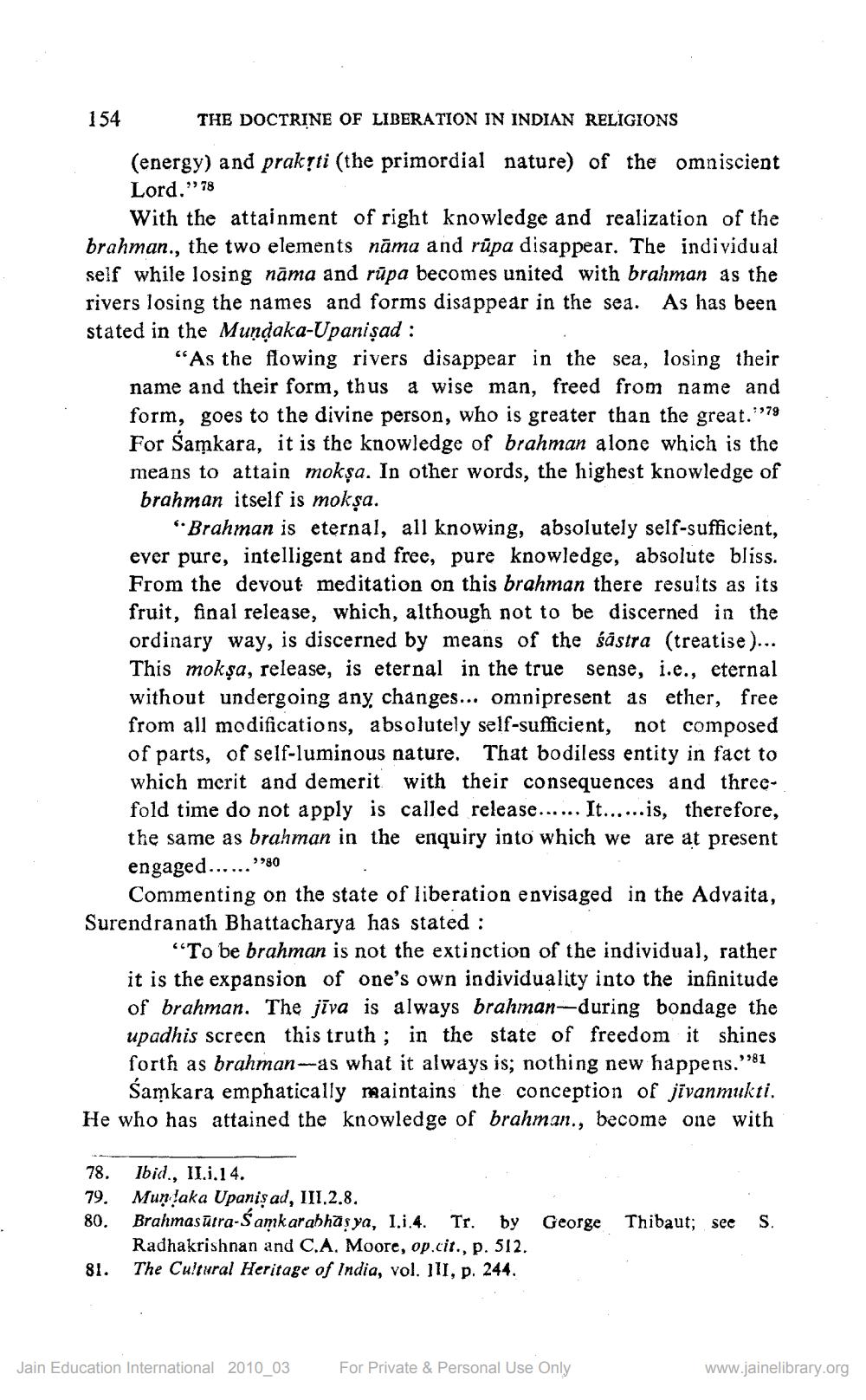________________
154
THE DOCTRINE OF LIBERATION IN INDIAN RELIGIONS
(energy) and praksti (the primordial nature) of the omniscient Lord.”78
With the attainment of right knowledge and realization of the brahman., the two elements nāma and rûpa disappear. The individual self while losing nāma and rūpa becomes united with brahman as the rivers losing the names and forms disappear in the sea. As has been stated in the Mundaka-Upanişad :
“As the flowing rivers disappear in the sea, losing their name and their form, thus a wise man, freed from name and form, goes to the divine person, who is greater than the great."979 For Samkara, it is the knowledge of brahman alone which is the means to attain mokșa. In other words, the highest knowledge of brahman itself is mokșa.
"Brahman is eternal, all knowing, absolutely self-sufficient, ever pure, intelligent and free, pure knowledge, absolute bliss. From the devout meditation on this brahman there results as its fruit, final release, which, although not to be discerned in the ordinary way, is discerned by means of the śāstra (treatise )... This mokşa, release, is eternal in the true sense, i.e., eternal without undergoing any changes... omnipresent as ether, free from all modifications, absolutely self-sufficient, not composed of parts, of self-luminous nature. That bodiless entity in fact to which merit and demerit with their consequences and threefold time do not apply is called release....... It...... is, therefore, the same as brahman in the enquiry into which we are at present engaged...... "80
Commenting on the state of liberation envisaged in the Advaita, Surendranath Bhattacharya has stated :
"To be brahman is not the extinction of the individual, rather it is the expansion of one's own individuality into the infinitude of brahman. The jīva is always brahman-during bondage the upadhis screen this truth; in the state of freedom it shines forth as brahman-as what it always is; nothing new happens."181
Šamkara emphatically maintains the conception of jīvanmukti. He who has attained the knowledge of brahman., become one with
78. Ibid., II.1.14. 79. Mun!aka Upanişad, 111.2.8. 80. Brahmasūtra-Šamkarabhāsya, 1.1.4. Tr. by George
Radhakrishnan and C.A. Moore, op.cit., p. 512. 81. The Cultural Heritage of India, vol. III, p. 244.
Thibaut; see
S.
Jain Education International 2010_03
For Private & Personal Use Only
www.jainelibrary.org




